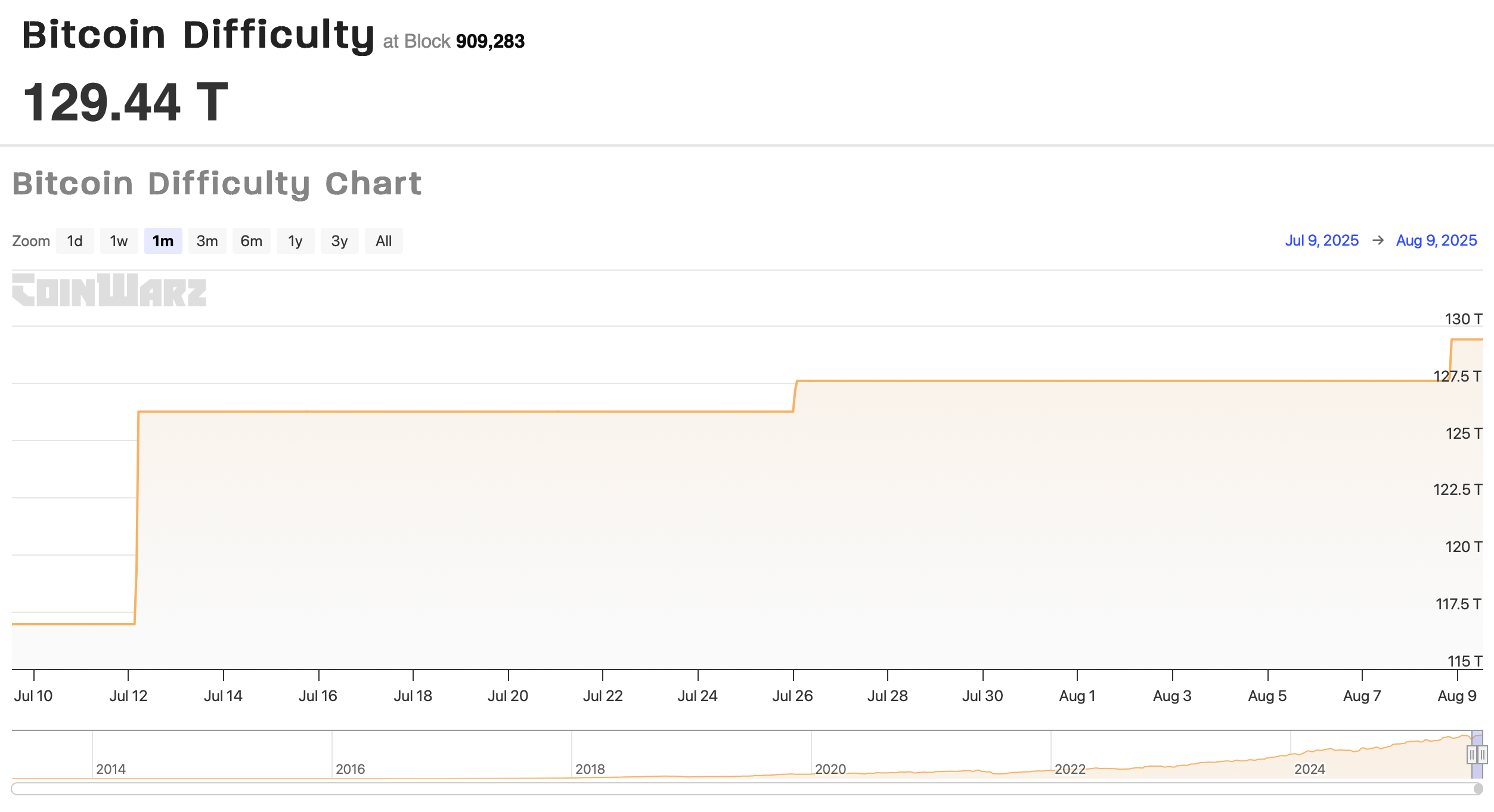Bitcoin’s Difficulty Smashes Records, Making Rewards Tougher Than Ever
The latest figures reveal Bitcoin’s difficulty rating notched its 11th increase of the year, rising 1.42% on Friday evening and making block rewards even harder to discover. Despite five separate decreases along the way, Bitcoin’s mining difficulty has still climbed 17.73% in 2025 so far.
129.44 Trillion: Bitcoin’s Highest Difficulty Level in History
Bitcoin block rewards just became harder to capture after the network’s difficulty climbed 1.42% at block height 909,216 on Friday. That adjustment pushed the difficulty to 129.44 trillion — the highest mark in the network’s history.
In simple terms, 129.44 trillion reflects the average number of hashes miners must compute to successfully unearth a new block. Bitcoin’s mining difficulty adjusts about every two weeks (every 2,016 blocks) to keep block discovery close to the 10-minute target, no matter how much computational power — or hashrate — the network commands.
 Bitcoin Difficulty on Aug. 9, 2025. Source: coinwarz.com
Bitcoin Difficulty on Aug. 9, 2025. Source: coinwarz.com
With hashrate hitting record highs, blocks have been found faster than usual, prompting the latest difficulty hike. If blocks slow below the 10-minute average, the system lowers difficulty instead. So far in 2025, there have been 16 difficulty changes, beginning Jan. 12 with a modest 0.61% uptick.
Of those, 11 were increases, adding up to a 34.27% climb, while the five decreases trimmed 16.54% from the total. That leaves Bitcoin’s mining difficulty up 17.73% for the year to date. The newest increase has also nudged the hashrate slightly lower.
After reaching a record 976 exahash per second (EH/s) on Aug. 8, the hashrate has eased to 965.97 EH/s. It’s still early to predict the exact outcome for the next retarget on Aug. 29, 2025, but current data points to a possible 1.77% difficulty reduction.
Bitcoin’s mining difficulty continues to push into record territory in 2025, driven by unprecedented hashrate levels and frequent upward adjustments. With the next retarget looming, miners are navigating a tighter race for block rewards while watching for signs of a potential difficulty drop or increase later this month.
You May Also Like

Fed Chairman Powell: Despite increased uncertainty, the economy is in a solid position

Punk plummet: NFT sales slide despite record Ethereum prices
